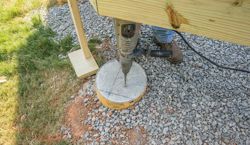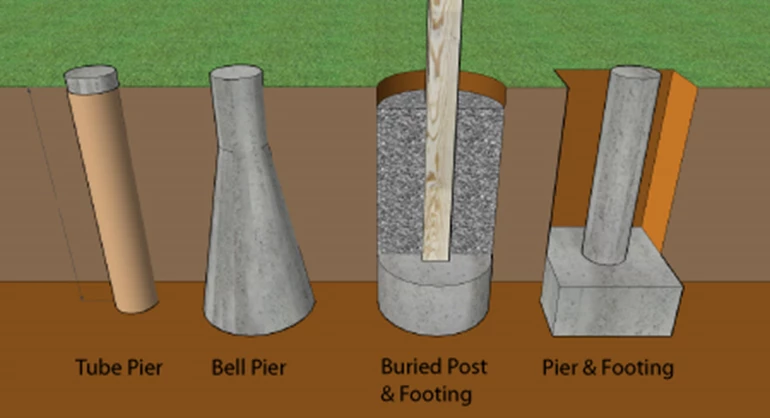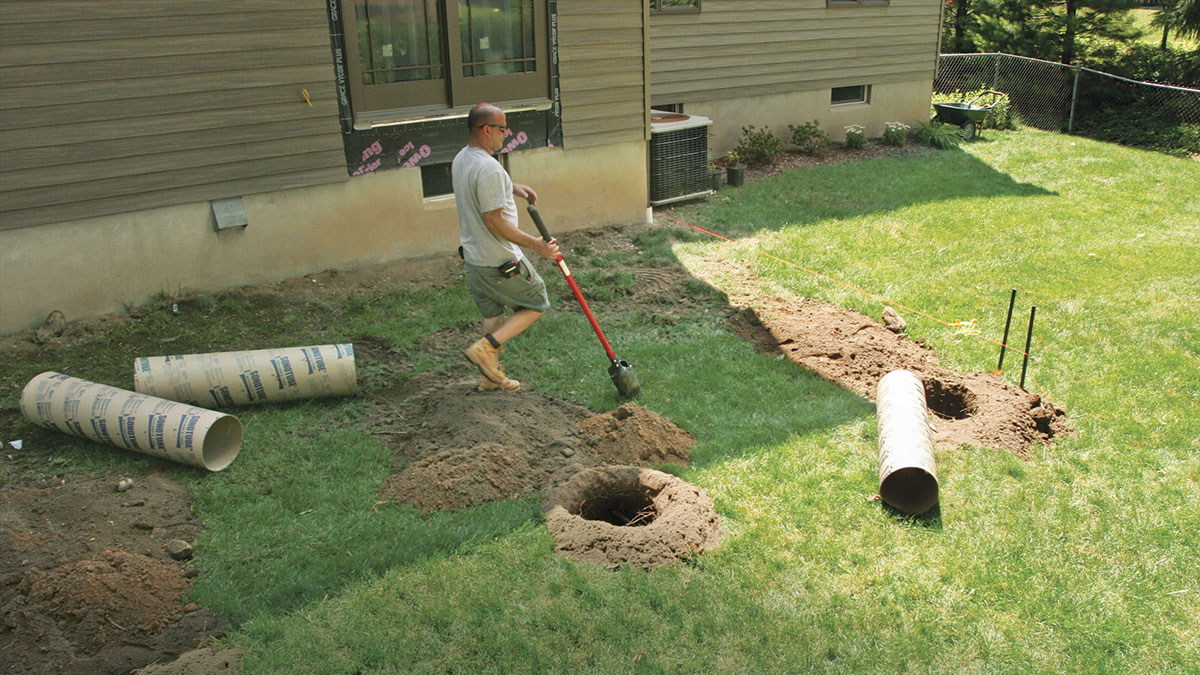Architectural Stability Matters: Choosing the Right Deck Footings for Your Outdoor Project
Architectural Stability Matters: Choosing the Right Deck Footings for Your Outdoor Project
Blog Article
Specialist Tips for Setting Up Deck Footings to Assistance Your Outdoor Room
When it comes to constructing a deck, one of the most essential components to take into consideration is the installation of correct grounds. These grounds are the structure upon which your exterior area will certainly relax, providing stability and assistance for years to come. What precisely does it take to set up deck grounds properly?
Significance of Proper Deck Grounds
Proper deck footings are important for guaranteeing the stability and durability of your outside room. Without solid and correctly set up grounds, your deck may end up being unsteady, leading to safety and security risks and expensive fixings.

In addition to stability, appropriate deck grounds also contribute to the longevity of your outdoor area (Deck Footings). Footings that are created and built to withstand the aspects and soil conditions in your location will certainly assist protect against the deck from shifting or working out gradually. By guaranteeing the footings are appropriately sized and mounted, you can decrease the threat of damages to the deck structure, prolonging its life-span and reducing the demand for expensive repair services or replacements

Selecting the Right Type of Grounds
When picking the suitable kind of footings for your deck, it is necessary to consider elements such as dirt problems, local building regulations, and the overall design of your outdoor room. The sort of footing you pick will certainly play an important function in guaranteeing the stability and long life of your deck.
One usual sort of footing is the concrete ground. Concrete grounds appropriate for the majority of soil problems and provide exceptional assistance for decks. They are commonly set up listed below the frost line to avoid moving and working out due to freezing and thawing cycles. One more option is helical piers, which are ideal for areas with unsteady dirt or high water tables. These piers are screwed into the ground and give solid support for the deck.
In some situations, you may need to use specific grounds, such as pile grounds or deep structures, if you are building a big or multi-level deck. These grounds are designed to distribute the weight of the deck over a bigger area, making certain stability and stopping sinking or clearing up.
Before selecting a kind of ground, it is important to consult local building regulations and policies to make certain compliance. Additionally, consider the design and planned use your outdoor area. Elements such as the size, shape, and load-bearing demands of your deck will affect the type of footing that is most appropriate.
Preparing the Ground for Footing Installation
To effectively prepare the ground for footing installation, it is crucial to evaluate the dirt conditions and take needed actions to ensure stability and longevity of the deck. The initial step is to excavate the location where the footings will certainly be set up. The deepness of the excavation will depend on the frost line in your area and the certain requirements of the deck style. It is necessary to remove any plants, rocks, or particles from the excavation to guarantee a strong structure.
When the area has been excavated, the following step is to small the dirt. This can be done utilizing a plate compactor or by utilizing a hand tamper. Condensing the dirt assists to remove any spaces or air pockets, which can bring about settling and instability with time.
After condensing the soil, it is very important to lay a layer of crushed rock or sites smashed rock at the base of the excavation. This will certainly supply water drainage and assistance to stop water from merging around the grounds, which can bring about disintegration and instability.
Step-by-Step Overview to Installing Deck Footings
After effectively preparing the ground for footing installation, the following action is to start the process of mounting deck footings. This step-by-step guide will certainly provide you with a clear understanding of exactly how to mount deck grounds for your exterior area.
Determine the area: Beginning by noting the placements of the deck footings using stakes and string. Make sure that the areas line up with the style and layout of your deck.
Dig the holes: Use a blog post opening miner or an auger to dig the openings for the footings. The deepness and size of the holes need to remain in conformity with local building regulations and the details requirements of your deck design.
Level the holes: Make use of a level to ensure that the holes are dug to the correct deepness and are degree with each other. (Deck Footings)
Include gravel: Place a layer of gravel at the bottom of each hole to enhance drainage and stop the timber from deteriorating.
Insert the grounds: Put the grounds into the holes, making certain they are degree and plumb. Utilize a degree and a determining tape to make certain precision.
Protect the footings: Put concrete into the openings around the footings, filling them news to the top. Make use of an article level to make sure the footings remain degree as the concrete sets.
Allow time for healing: Allow the concrete remedy according to the manufacturer's guidelines prior to waging the deck construction.
Usual Blunders to Prevent Throughout Footing Installment
One crucial aspect to consider during the installation of deck footings is staying clear of common errors that can jeopardize the stability and durability of your outdoor room. While deck grounds may seem like a basic and simple component of the building and construction process, forgeting certain aspects can cause costly repair services and possible safety threats down the line.

Furthermore, overlooking to mount proper drainage measures can create water to collect around the footings, causing rot, degeneration, and the ultimate weakening of the deck's foundation. Additionally, utilizing the incorrect type of footing material or stopping working to appropriately protect the grounds can endanger their architectural stability.
To prevent these blunders, it is important to seek advice from an expert or follow more tips here sector guidelines to guarantee appropriate footing installation. By doing so, you can guarantee the stability and durability of your exterior space, offering a delightful and secure environment for years to find.
Conclusion
Finally, installing proper deck footings is crucial for the security and long life of your exterior room. By picking the appropriate kind of footings and sufficiently preparing the ground, you can guarantee a solid structure for your deck. Adhering to a step-by-step guide and preventing usual mistakes throughout footing installation will certainly better enhance the longevity and safety of your deck.
Proper deck footings are essential for guaranteeing the security and longevity of your exterior room. The footings serve as a connection between the deck and the ground, enabling the weight of the deck and its owners to be spread evenly right into the dirt.One typical kind of footing is the concrete ground. Insert the footings: Put the grounds right into the holes, making sure they are degree and plumb. Secure the grounds: Pour concrete right into the openings around the grounds, loading them to the top.
Report this page